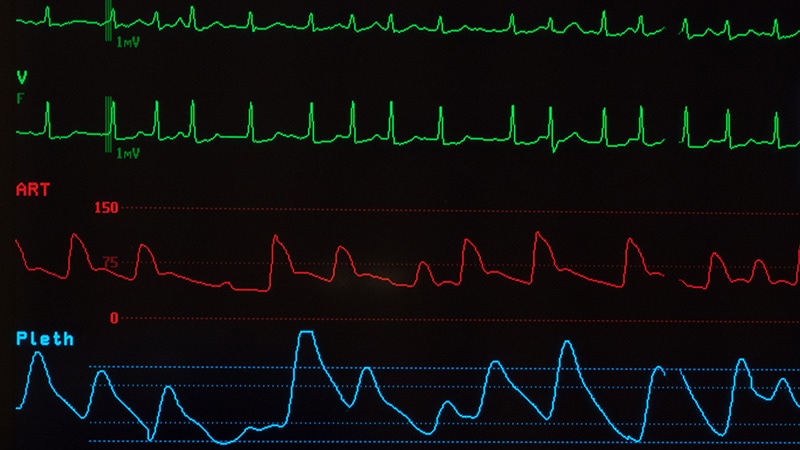Hybrid Ablation Superior to Endocardial Alone for Persistent AF
Core Concepts
Hybrid ablation is more effective than endocardial catheter ablation alone for persistent atrial fibrillation.
Abstract
Staged hybrid ablation demonstrated superior outcomes compared to endocardial catheter ablation alone for persistent atrial fibrillation. The CEASE-AF trial showcased the benefits of combining endocardial and epicardial ablation techniques. Key highlights include:
- Hybrid ablation resulted in a significant increase in effectiveness compared to endocardial ablation alone.
- Safety outcomes were comparable between the hybrid ablation and catheter ablation groups.
- The study emphasized the importance of addressing the mechanism of atrial fibrillation with a minimally invasive hybrid approach.
- Primary efficacy endpoints favored hybrid ablation, showing a substantial benefit increase in effectiveness.
- The study highlighted the role of a collaborative heart team approach in treating nonparoxysmal atrial fibrillation.
Customize Summary
Rewrite with AI
Generate Citations
Translate Source
To Another Language
Generate MindMap
from source content
Visit Source
www.medscape.com
Hybrid Ablation Beats Endocardial Alone for Persistent AF
Stats
Hybrid ablation resulted in a 32.4% absolute benefit increase in effectiveness and an 83% relative benefit increase.
Primary effectiveness through 12 months: 71.6% for hybrid ablation vs. 39.2% for catheter ablation.
Repeat ablations: 4.2% for hybrid ablation vs. 35.3% for catheter ablation.
Quotes
"We have seen that hybrid ablation resulted in 32.4% absolute benefit increase in effectiveness and 83% relative benefit increase." - Nicholas Doll, MD, PhD
Key Insights Distilled From
by Daniel M. Ke... at www.medscape.com 04-24-2023
https://www.medscape.com/viewarticle/991131
Deeper Inquiries
What are the implications of the study results for the future of atrial fibrillation treatment?
The study results have significant implications for the future of atrial fibrillation (AF) treatment. The findings suggest that staged hybrid ablation, which combines endocardial and epicardial ablation, provides superior effectiveness in controlling atrial arrhythmias compared to endocardial catheter ablation alone. This could potentially change the standard of care for patients with advanced AF, especially those with persistent or longstanding persistent AF. The substantial increase in effectiveness seen with hybrid ablation, as demonstrated by the 32.4% absolute benefit increase and 83% relative benefit increase, indicates a promising direction for improving outcomes in AF patients. These results may lead to a shift towards more comprehensive treatment approaches that target both endocardial and epicardial surfaces to address the complex mechanisms of AF.
Is the comparison between hybrid ablation and endocardial catheter ablation fair, considering the differences in the ablation protocols?
The comparison between hybrid ablation and endocardial catheter ablation may raise questions about the fairness of the comparison due to the differences in ablation protocols. In the study, the hybrid ablation group underwent a two-stage approach with a more aggressive ablation protocol, including epicardial lesions for pulmonary vein isolation, posterior wall box isolation, and left atrial appendage exclusion in the first stage, followed by endocardial mapping and catheter ablation in the second stage. On the other hand, the endocardial catheter ablation group received a single-stage procedure with catheter-mediated pulmonary vein isolation and repeat ablations as clinically indicated.
The differences in the ablation protocols, with the hybrid ablation group undergoing a more extensive ablation procedure, could potentially introduce bias into the comparison. The more comprehensive nature of the hybrid ablation approach may have contributed to the higher success rates observed in that group. Therefore, it is essential to consider these protocol variations when interpreting the study results and assessing the true efficacy of each approach.
How can the collaborative heart team approach be further optimized to enhance patient outcomes?
To optimize the collaborative heart team approach and enhance patient outcomes, several strategies can be implemented:
Standardized Protocols: Establishing standardized protocols for hybrid ablation procedures can ensure consistency in treatment approaches and outcomes across different centers. This can help streamline the process and improve the quality of care provided to patients.
Multidisciplinary Communication: Encouraging open communication and collaboration between electrophysiologists and cardiac surgeons is crucial for the success of the heart team approach. Regular meetings, case discussions, and shared decision-making can lead to better treatment planning and execution.
Training and Education: Continuous training and education for team members on the latest techniques, technologies, and best practices in AF treatment are essential. Keeping up-to-date with advancements in the field can improve the quality of care and patient outcomes.
Patient-Centered Care: Focusing on patient-centered care by involving patients in treatment decisions, providing comprehensive pre- and post-procedural care, and addressing patient concerns can enhance overall satisfaction and outcomes.
Quality Improvement Initiatives: Implementing quality improvement initiatives, such as regular outcome monitoring, performance feedback, and process optimization, can help identify areas for improvement and drive continuous enhancement of the heart team approach.
By optimizing these aspects of the collaborative heart team approach, healthcare providers can deliver more effective and personalized care to AF patients, ultimately leading to improved outcomes and quality of life.
0
